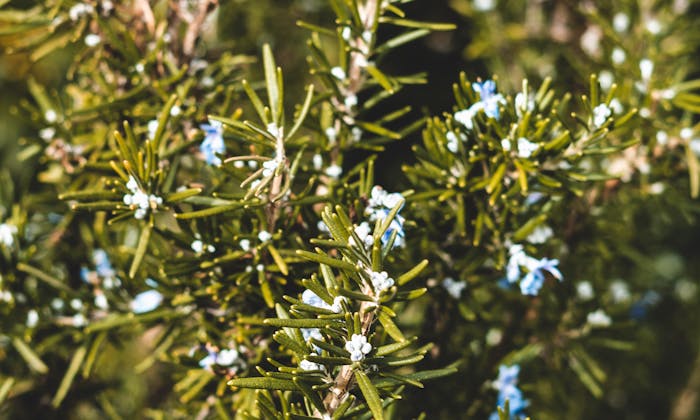A popular herb, Rosemary is much loved by pollinators and also makes for a wonderful evergreen hedge.
Rosemary is a wonderful plant to grow in your herb garden. It grows as an evergreen shrub and tolerates all sorts of growing conditions. It does best in full sun, and nearly as well in partial shade.
Rosemary thrives in Southern California because it is a mediteranean plant. It is drought tolerant and does well with our dry climate. Many people grow it as an ornamental hedge. Some cultivars flower either in late spring to early summer and attracts many pollinators, or in November to December.
History
Rosemary is a member of the mint family (Lamiaceae). It also has recently been moved from its namesake genus "Rosemareus" to the Salvias. Salvias make up the largest genus in the mint family, and include the many sages.
Rosemary is native to the Mediterranean and Asia. It has been mentioned in text as far back as 5,000 BC. It seems to survive under almost any climate humans but the most extreme. Rosemary forms shrubs, with some varieties taller than others. The tallest can reach nearly 2 meters in height. Most remain around the 1 meter mark.
Rosemary is used as a flavoring herb for many dishes, mainly meats. It is also used to make an herbal tea.
How to Grow
Rosemary is a very easy plant to grow, it thrives in a large range of climates. It's natural climate is the dry, hot Mediteranean region, so it is no surprise it does very well in California. Rosemary grows just as well in pots as is does in the ground.
Rosemary prefers well-drained, loamy, slightly acidic soil, but it does just fine with our hard clay. If planting in hard clay, take care to water slowly, fully, and infrequently, allowing the soil to dry out between waterings.
Rosemary is a light-feeder. If grown in the ground, you don't need to fertilize rosemary at all, but if you grow it in pots you make want to provide a small amount of slow-release fertilizer. It's best to provide too little than too much.
Propagating It is possible to grow rosemary from seed, but they have a low success rate. Rosemary is usually grown either by root division or by stem cuttings.
Stem cuttings are an easy way to propagate rosemary. They are best taken near the beginning of the growing season. Find a stem with some new growth on it and cut about 4 inches off.
Remove the lower inch of leaves and place the plant in water. In about a week it should have started to grow roots. Once you have about 4-6 roots growing, you can plant them in potting soil and eventually transplant it to it's final spot.
Harvesting
Once rosemary is established it will soon generate more rosemary than you can probably keep up with. Harvesting is a simple as clipping off what you need. The best sprigs are going to be the newer ones, with fresh greenery.
Pruning Rosemary is a very resilient plant. If your bush has become large and unwieldy, or started to look old and and sad, a bit of pruning may be all it needs.
With rosemary, you don't have to be afraid about cutting into old, hardwood. If you want to cut larger pieces of wood to shape or resize the plant, go ahead and do it. Just make sure your shears are clean and sharp to avoid contaminating the plant with harmful bacteria.
The best time of the year to prune rosemary is in winter, when it has gone somewhat dormant. Try not to cut back more than 30% of the plant to avoid stress that can lead to shock.

